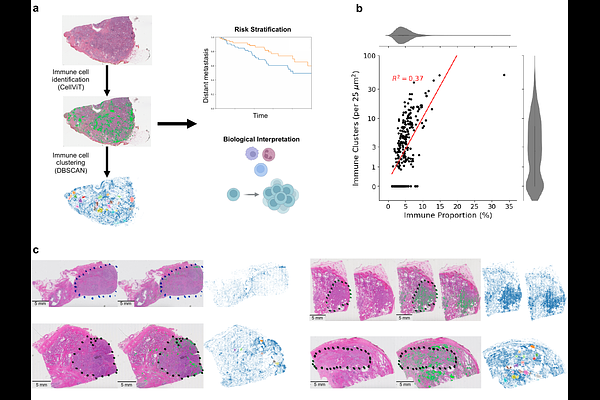Immune Spatial Organization Predicts Metastasis Risk in Aggressive Localized Prostate Cancer

Immune Spatial Organization Predicts Metastasis Risk in Aggressive Localized Prostate Cancer
Yang, D. D.; Abdelnaser, A.; Wala, J.; Haas, A. J.; Barney, A. A.; Saad, E.; Crowdis, J. P.; Ricker, C. A.; Park, J.; King, M. T.; Nguyen, P. L.; Choueiri, T. K.; Tewari, A. K.; Salari, K.; Taplin, M.-E.; Wu, C.-L.; Van Allen, E. M.
AbstractRisk stratification in localized prostate cancer (PCa) remains imprecise. Computational pathology has emerged as an attractive option for improving risk stratification, but current approaches either lack interpretability or focus solely on tumor morphology. Here, we identify, validate, and provide interpretability for an immune microenvironment-derived computational pathology biomarker for high-grade PCa. Using digitized hematoxylin and eosin-stained (H&E) slides from two independent cohorts of patients treated with radical prostatectomy (n=490), we found that spatial clustering of immune clusters, but not immune cell abundance, was independently associated with reduced risk of distant metastasis for high-grade disease but not low-grade. Joint analysis of H&E images and RNA sequencing (n=326) revealed that in high-grade disease, high-cluster samples were enriched in CD8+ T cells, activated memory CD4+ T cells, and Tregs, as well as clonal T cell populations, overall suggestive of an underlying T cell-mediated antitumor response. No such enrichment was found in low-grade tumors. These findings establish immune spatial architecture as a novel, interpretable computational pathology biomarker and provide insight into the immune landscape of high-grade PCa.